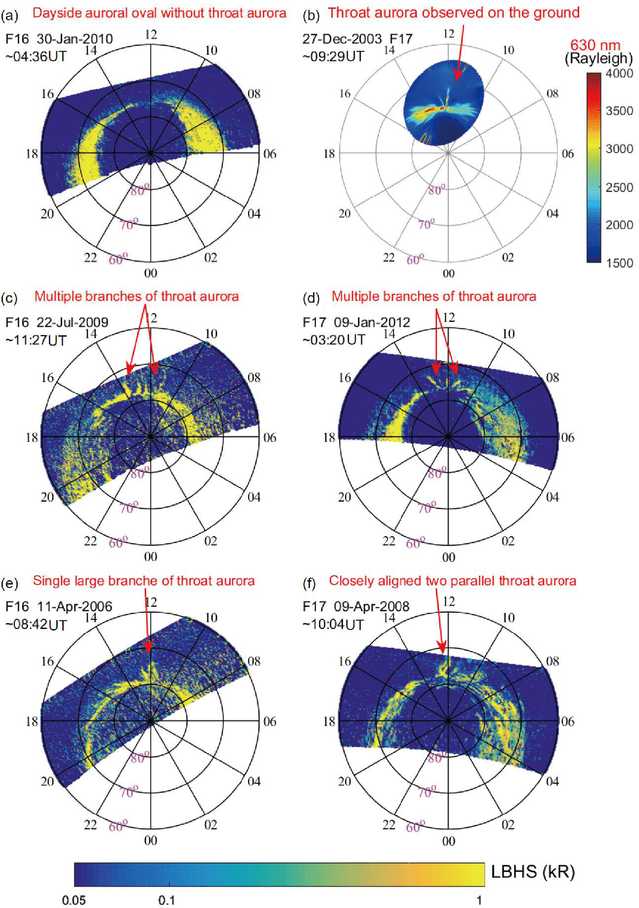Su ZHOU1,2,3, Desheng HAN1*, Sneha A. GOKANI1, Ravindran SELVAKUMARAN1 &
Yongliang ZHANG4
1 State Key Laboratory of Marine Geology, School of Ocean and Earth Science, Tongji University, Shanghai 200092, China;
2 State Key Laboratory of Space Weather, Chinese Academy of Sciences, Beijing 100190, China;
3 School of Electronic and Communication Engineering, Guiyang University, Guiyang 550005, China;
4 The Johns Hopkins University Applied Physics Laboratory, Laurel, MD 20723, USA
Abstract:
Throat aurora was defined based on the ground observations near local noon and has been suggested to be the ground signature of an indentation on the subsolar magnetopause. A global view of the auroral oval with throat aurora will be critical for inferring global processes at the magnetopause, but it has never been achieved. Using imaging spectrograph observations from Defense Meteorological Satellite Program satellites, for the first time, here we show typical throat auroras in a global view and reveal some important observational facts as follows. (1) The throat auroras can be as long as ∼8 degrees in latitudinal direction, which is hardly to be fully seen in the ground-based camera. (2) The plasma flows and field aligned currents associated with throat aurora show consistences with previous radar observations, which have been suggested to be the observational evidence of magnetopause reconnection. (3) Most importantly, we confirmed that the electron and ion precipitations associated with throat aurora are always spatially separated, i.e., electrons in the east and ions in the west. The observational results not only establish a new picture of the aurora oval near local noon, but also provide important support to a conceptual model of throat aurora.
Full Article:https://doi.org/10.1007/s11430-019-9592-y



